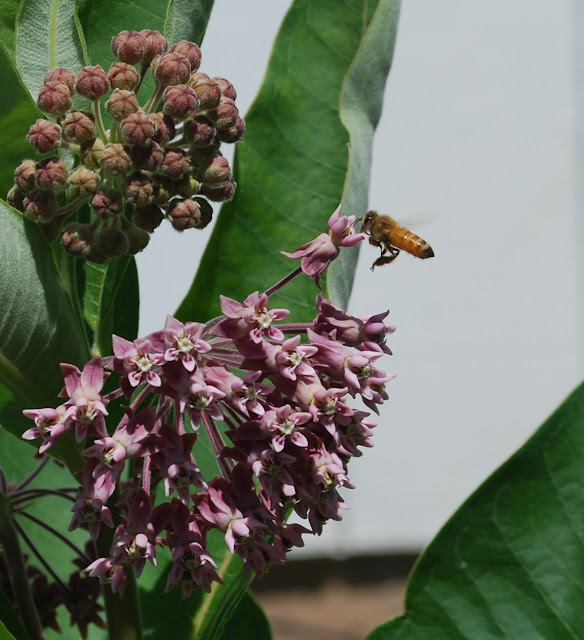 |
| Milkweed Asclepius syriaca. 7.4.16 |
Asclepias syriaca is a fragrant native flower that goes by the names, common milkweed, butterfly flower, silkweed, among others. Honeybees love them, as do many other pollenizing and nectar collecting insects. They are fragrant and have distinctive balls of soft pink flowers on a tropical, rubber-tree looking perennial plant. They are native to prairies, and considered weedy by some but attractive to others.
These plants were grown from seeds, planted in early 2015 and planted in my fig tree row. Some bloomed this year, especially the ones in sunnier locations. I wanted to plant a few in the rock garden border, which is very sunny and will show them off better.
 |
| Milkweed Asclepius syriaca. 7.4.16 |
Most of the web info states that milkweed is not transplantable. They need to be grown from seeds, or in containers to be planted when small. However, these plants were not in an ideal location, and were too close together. This may be a good time to transplant, now that they have finished growing for the year, have collected their nutrients and stored them in the rhizomatous roots, and the hottest parts of summer are long gone.
A few hours ahead of digging, I watered generously to loosen up the dry soil. Then I cut a wide circle under the plant, and dug under it, lifting it out carefully. The soil fell away, leaving healthy-looking roots.
 |
| Milkweed Asclepius syriaca. 7.4.16 |
The pictured roots were the best looking of the three plants that I moved. The other two had much less root mass. I quickly re-planted and watered them in, and mulched. They are tied so that they don't fall over and pull the roots out of the soft soil
They don't look like much. It will be interesting to see if they grow next year. I think they will be OK.


















